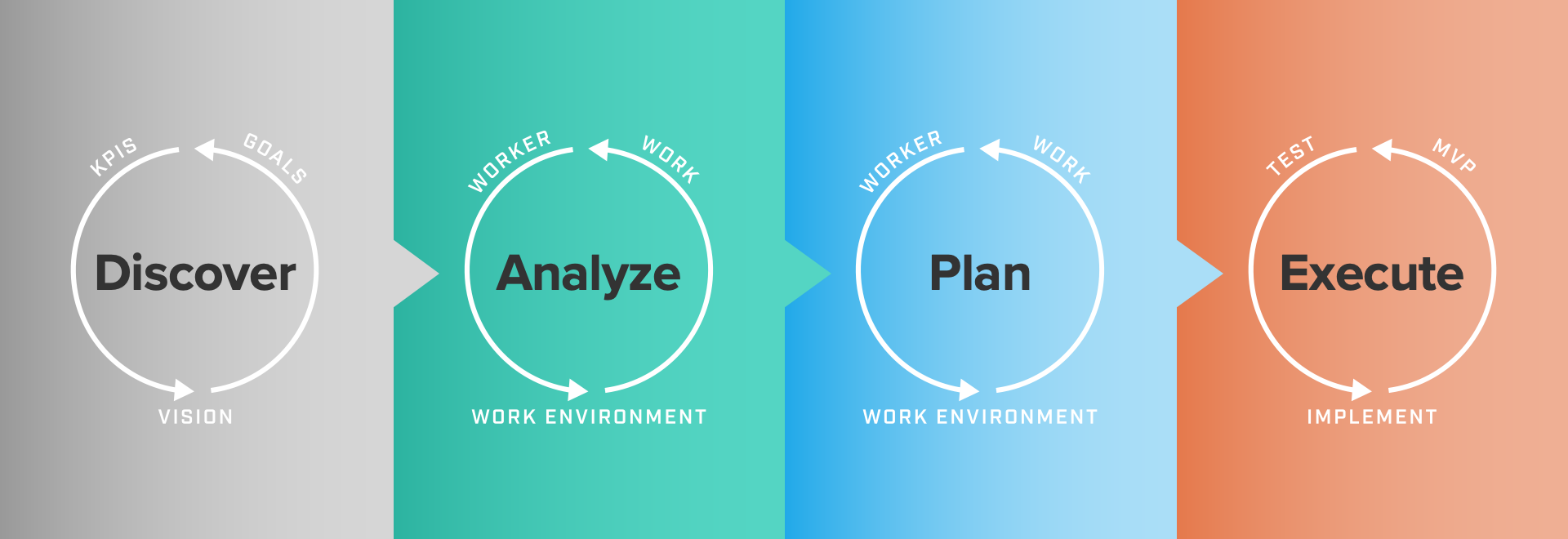
Performance consulting is a process that benefits anyone who wants to achieve organizational change, improve employee performance, or impact an organization through partnership. The bottom line — it’s a strategic process that produces business results by maximizing the performance of people and organizations.
Performance consulting starts by identifying a business need(s), its cause(s), and a solution strategy to meet that need. The process is a performance-oriented approach to not only focus on training but also to increase the performance of the employees to reach productive results. Never assume training is the solution to an issue. Instead, collect data to identify the actual need. Not all business situations can or should be solved with training, so identifying whether training is a possible or reasonable solution is essential to this process.
A performance consultant works with organizations to help improve process and project initiatives. Their duties include:
Performance consultants may work directly for a business or with a consulting agency. They are essential in improving company performance rather than just enhancing knowledge.
According to Devlin Peck, “It’s also important to note that some instructional designers refer to themselves as performance consultants, and some performance consultants refer to themselves as instructional designers.” Working as performance consultants, learning leaders, learning experience designers, or instructional designers can form strategic partnerships with other business leaders and teams to ensure that training programs or solutions align with business requirements.
Another way to think about performance consulting is how it fits with a workforce transformation, which focuses on improving workforce skills, tools, and the organization’s ability to keep up with constant change. It puts the focus more on talent, functions, and roles. In today’s world, transformation is driven mainly by the rapid shift to a remote working environment and the belief that people are an organization’s most valuable asset. Emeritus states, “Workforce transformation refers to realigning a company’s employee base to ensure that their skills match the company’s strategic needs.”
Begin your organization’s transformation by carefully examining where you have been, where you are now, and where you need to go. There is no one-size-fits-all approach to organizational change. Still, the companies that remain transparent, agile, and responsive will see and respond to the needed changes more quickly and with less disruption to their employees.
Workforce transformation is becoming increasingly popular as organizations leverage new technologies and strategies to engage employees better. By transforming their workforce, organizations can achieve several benefits.
Let’s look at the way Ardent works through a transformation.
Discover – In this phase, areas of focus are identified. This phase is critical to set the tone for employee and team engagement. Performance consultants meet with stakeholders to define specific, attainable, and measurable goals that need to be accomplished.
Analyze – Here, we look at the current state of the specific focus areas for better understanding. The output is a current-to-future state report. The performance consultant can more accurately analyze and identify performance problems by interviewing, surveying, and observing employees.
Plan – In this phase, a blueprint is created with high-level timelines. We think through rollout, adoption, and communication strategies. A performance consultant needs to advocate for change and be willing and able to guide people through the change management process.
Execute – In the final phase, we design, develop, implement, and operationalize the elements of the blueprint. A performance consultant's tasks may include prototyping, developing, and refining training or other solutions.

Although a workforce transformation will ultimately reach the entire organization, some peoples’ roles and skill sets are necessary to immediately achieve the highest-priority business outcomes. That’s where you focus first. What people “do” changes what they “know.” Any workforce transformation effort must create and instill new behaviors to be successful. The knowledge and skills will then follow naturally.
Today’s employees want and expect to participate actively in any change that affects them. They’re the ones who are the closest to your clients and the day-to-day execution of the business; they’re the most aware of what needs improvement and how to make that happen. You’ll often find that your employees will come up with opportunities you might never have considered.
Performance consulting benefits organizations in multiple ways when planning a workforce transformation. They solve issues using analysis, training design, project management, communication, and evaluation skills.
Ardent’s four-phased approach to workforce transformation can be adjusted to any size organization or transformational project. We partner with our clients to ensure success by empowering employees with the tools and knowledge they need to thrive throughout their transformation experience.
Want to learn more? Contact one of our Learning Consultants today.
These Stories on Workforce Transformation
Quick poll: Raise your hand if you like taking compliance training.
I can’t see you, ...
Think about the skills you’ll need during any given workday. In your dynamic, fast-paced workplace, you’re required to pivot, problem solve, collaborate, communicate, ...
We are living through a period of fundamental transformation in the way we live, work, and interact with the world around us. The rise of digital requires us to keep ...
Copyright © 2025 Ardent Learning Inc. All Rights Reserved.